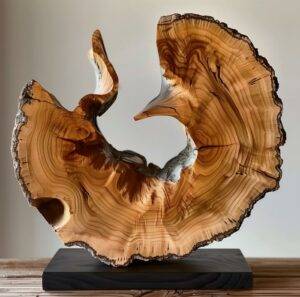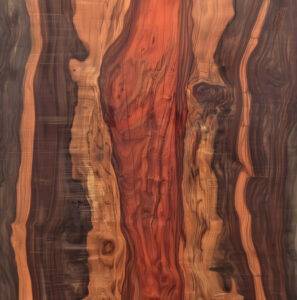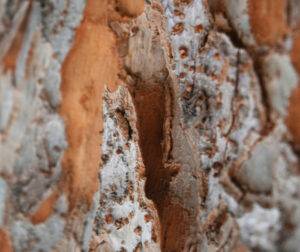Ebony wood
Ebony is a non-European hardwood with a distinctive black to dark brown grain that gives it a mystical and elegant appearance. Due to its rarity and the complex drying process, ebony is highly sought-after, but also expensive and requires professional processing to avoid cracks.
Ebony trees, also known as date plums or plums of the gods, belong to the ebony family. In mythology, ebony is often attributed with magical powers, as can be seen in the story of Snow White, whose hair was as black as ebony.
The heartwood of ebony is black, fine-pored, smooth, hard, colour-fast and slightly shiny, while the sapwood, which is typically removed, is yellow-grey and unattractive. Only the heartwood is used and is one of the most valuable types of wood in the world.
Ebony is used for inlay work, instrument making, chess pieces, piano keys, knife handles and fine brush bodies. It is imported to Europe in small quantities and is subject to special import regulations.
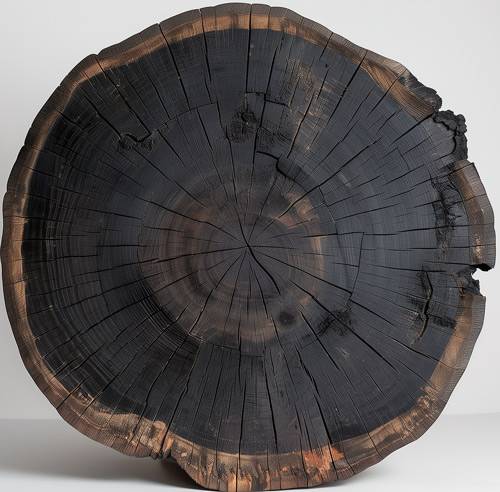
Clear information about ebony:
- Ebony is a precious wood that is highly sought after in art.
- Artists use ebony in sculpture to shape and work it.
- In painting, ebony is used as a canvas or frame.
- Historically, ebony was regularly used for furniture and musical instruments.
- Ebony has a symbolic meaning in art and artists are increasingly paying attention to sustainability.
Ebony in sculpture
Ebony is a very hard wood, which makes it an ideal choice for sculptors. Artists use various techniques to shape and manipulate the wood. These include carving, sanding and polishing the wood to achieve the desired shape.
A famous example of an ebony sculpture is the “Venus of Brassempouy”, a prehistoric ivory figurine from the Paleolithic period. This small statue demonstrates the skills of early artists in working with the material.
Ebony in painting
Ebony can also be used as a canvas or frame for paintings. The dark wood gives the works an elegant contrast to the play of colours in the paintings. A famous example of a painting with ebony elements is “The Adoration of the Magi” by Gentile da Fabriano. In this work, ebony is used as a frame to emphasize the painting and give it an extra dimension.
Historical use of ebony in art
Ebony was not only used in the ancient world, but was also of great importance in European art history. It was particularly popular in the Baroque era and was used for furniture, sculptures and other decorative elements.
In Africa, ebony also had a long tradition in art. It was often used for masks and sculptures that had ritual or religious meanings.
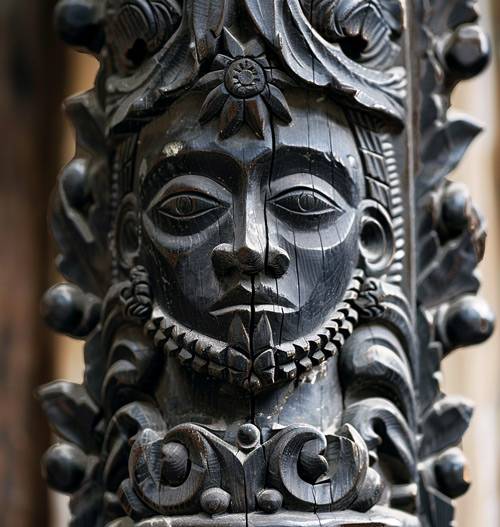
Ebony as a symbol
Ebony also has a symbolic meaning in various cultures. In many African cultures, it is seen as a symbol of strength, power and protection from evil spirits. In Europe, it was typically associated with luxury and wealth.
Artists have used this symbolic meaning of ebony to enrich their works and convey additional messages. One example of this is the painting “The Black Madonna” by Jean-Baptiste Carpeaux, which emphasizes the spiritual power of the material.
Sustainability of ebony
Although ebony is a valuable material, there are increasing ethical concerns about its use in the art industry due to illegal logging and the trade in endangered species such as African ebony. Artists and craftspeople have become aware of this issue and are looking for sustainable alternatives.
Some artists now use recycled or certified wood to produce their work. Others are working with local artisans to support the local economy and reduce illegal logging.
Conclusion
Ebony has a long history in art and will continue to play a major role. It is a versatile material that can be used in both sculpture and painting. It has a symbolic meaning and can convey additional messages.
However, we also need to address the ethical issues surrounding the use of ebony and find sustainable solutions. The future of ebony in art depends on how we can deal with these challenges and find alternative materials that are both aesthetically pleasing and ecologically responsible.
FAQs
What is ebony?
Ebony is a very hard and dense wood that comes from various species of ebony trees. It is known for its deep black colour and is often used as a noble material in art and furniture making.
How is ebony used in art?
Ebony is regularly used in art for sculptures, carvings and inlays. It is also used to make musical instruments such as pianos, violins and guitars.
Which artists have used ebony in their work?
Many famous artists have used ebony in their works, including Michelangelo, Leonardo da Vinci and Rembrandt. Modern artists such as Anish Kapoor and Damien Hirst also use ebony in their work.
Where does the ebony used in art come from?
Ebony comes from different parts of the world, including Africa, Asia and America. However, most ebony species are endangered and the trade in ebony is strictly regulated.
How is ebony wood worked?
Ebony is difficult to work with due to its hardness and density. It is typically worked with special tools such as diamond saws and drills. It can also be polished and stained to enhance its natural beauty.
How expensive is ebony?
Ebony is very expensive due to its rarity and its use in art and furniture making. The price varies depending on the origin and quality of the wood, but can amount to several thousand euros per cubic meter.
